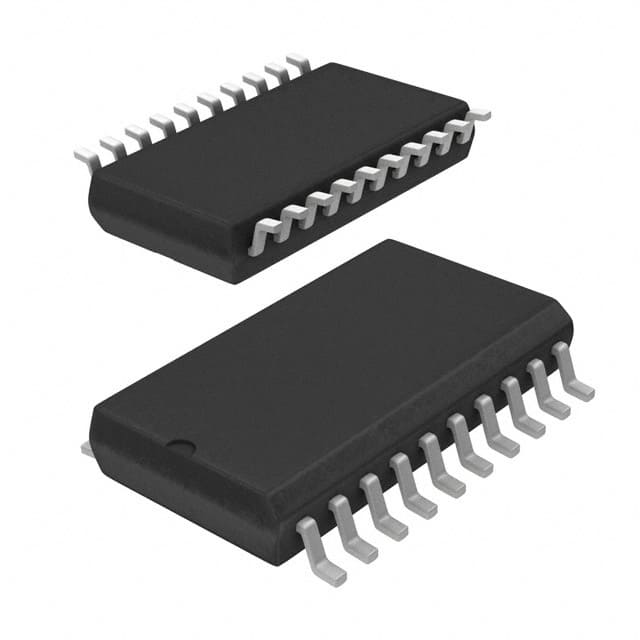Viz Specifikace pro podrobnosti o produktu.

ATTINY1634R-SU
Product Overview
The ATTINY1634R-SU belongs to the category of microcontrollers and is designed for various embedded applications. This microcontroller is known for its low power consumption, high performance, and versatile functionality. It comes in a small package and is suitable for use in a wide range of electronic devices.
- Category: Microcontroller
- Use: Embedded applications
- Characteristics: Low power consumption, high performance
- Package: Small form factor
- Essence: Versatile functionality
- Packaging/Quantity: Available in various packaging options
Specifications
The ATTINY1634R-SU features a 16-bit RISC architecture with 16KB of in-system programmable flash memory, 512 bytes of EEPROM, and 1KB of SRAM. It operates at a voltage range of 1.8V to 5.5V and offers a wide range of peripherals including timers, communication interfaces, and analog-to-digital converters.
Detailed Pin Configuration
The microcontroller has a total of 20 pins, each serving specific functions such as digital I/O, analog input, power supply, and communication interfaces. The pinout configuration is crucial for interfacing the microcontroller with external components and peripherals.
Functional Features
The ATTINY1634R-SU offers a rich set of functional features including multiple timers, PWM outputs, USART, SPI, and I2C interfaces. It also includes analog comparator inputs and a 10-bit ADC for precise analog signal processing. These features make it suitable for a wide range of applications requiring both digital and analog control.
Advantages and Disadvantages
Advantages: - Low power consumption - High-performance RISC architecture - Versatile peripheral set
Disadvantages: - Limited program memory compared to higher-end microcontrollers - Limited number of I/O pins for complex applications
Working Principles
The microcontroller operates based on the RISC architecture, executing instructions with minimal clock cycles to achieve high performance while consuming minimal power. It interfaces with external components through its pins and peripherals, enabling it to control and monitor various aspects of an electronic system.
Detailed Application Field Plans
The ATTINY1634R-SU is well-suited for applications such as battery-powered devices, sensor nodes, IoT devices, and small-scale control systems. Its low power consumption and versatile functionality make it ideal for applications where space and power efficiency are critical.
Detailed and Complete Alternative Models
Some alternative models to the ATTINY1634R-SU include the ATTINY85, ATTINY2313A, and ATTINY841. Each of these models offers different combinations of program memory, peripherals, and pin configurations, allowing designers to choose the most suitable microcontroller for their specific application requirements.
In conclusion, the ATTINY1634R-SU is a versatile microcontroller suitable for a wide range of embedded applications, offering a balance of performance, power efficiency, and functionality.
Word count: 398
Seznam 10 běžných otázek a odpovědí souvisejících s aplikací ATTINY1634R-SU v technických řešeních
What is the ATTINY1634R-SU microcontroller used for?
- The ATTINY1634R-SU microcontroller is commonly used in various technical solutions such as embedded systems, IoT devices, and consumer electronics.
What are the key features of the ATTINY1634R-SU?
- The ATTINY1634R-SU features 16KB of flash memory, 512 bytes of EEPROM, 128 bytes of SRAM, and a wide range of peripherals including timers, communication interfaces, and analog-to-digital converters.
How can I program the ATTINY1634R-SU?
- The ATTINY1634R-SU can be programmed using popular development tools such as Atmel Studio or Arduino IDE with the appropriate hardware programmer.
What are the power requirements for the ATTINY1634R-SU?
- The ATTINY1634R-SU operates at a voltage range of 1.8V to 5.5V, making it suitable for a wide range of power supply options.
Can the ATTINY1634R-SU be used in battery-powered applications?
- Yes, the low-power consumption of the ATTINY1634R-SU makes it well-suited for battery-powered applications, extending the device's operational lifetime.
Does the ATTINY1634R-SU support communication interfaces like I2C and SPI?
- Yes, the ATTINY1634R-SU supports both I2C and SPI communication interfaces, enabling seamless integration with other devices and sensors.
What are some common applications for the ATTINY1634R-SU?
- Common applications include smart home devices, sensor nodes, industrial control systems, and small-scale automation solutions.
Is the ATTINY1634R-SU suitable for temperature-sensitive environments?
- The ATTINY1634R-SU has a wide operating temperature range, making it suitable for use in both commercial and industrial temperature-sensitive environments.
Can the ATTINY1634R-SU be used for motor control applications?
- Yes, the ATTINY1634R-SU can be used for simple motor control applications, thanks to its built-in timers and pulse-width modulation (PWM) capabilities.
Where can I find detailed technical documentation for the ATTINY1634R-SU?
- Detailed technical documentation, including datasheets and application notes, can be found on the official Microchip website or through authorized distributors.

